|
|
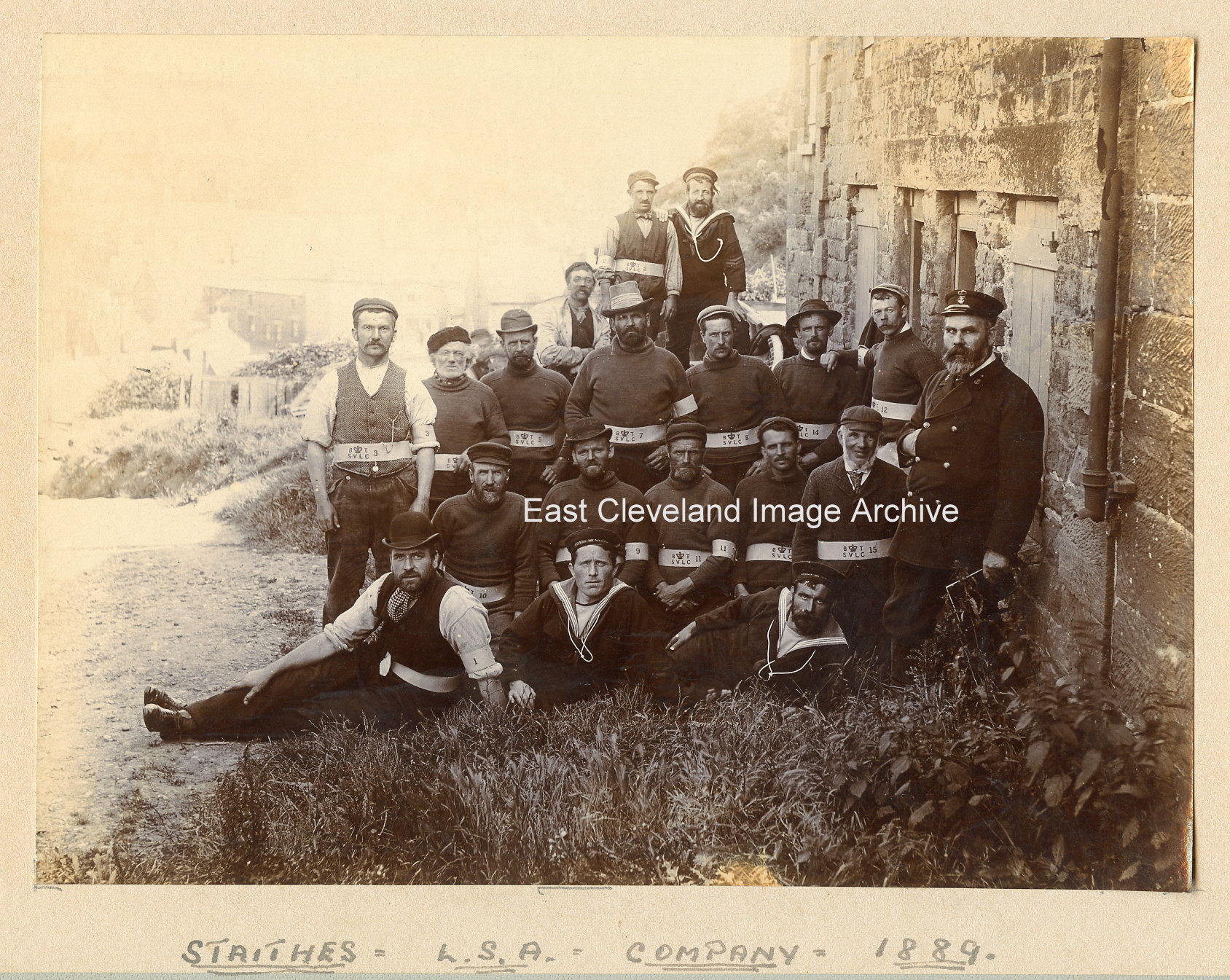
The Life Saving Company were responsible for rescues from the shore, firing a line to a vessel in distress. Other ropes and pulleys were then hauled out to the vessel and the crew brought ashore one by one. They would be the forerunners of the Coastguard Auxiliary Service. Mr. Conn’s grandfather, Jack Bennison, is standing beside the two men higher up at the back.
Image courtesy of Mr. Ray Conn.
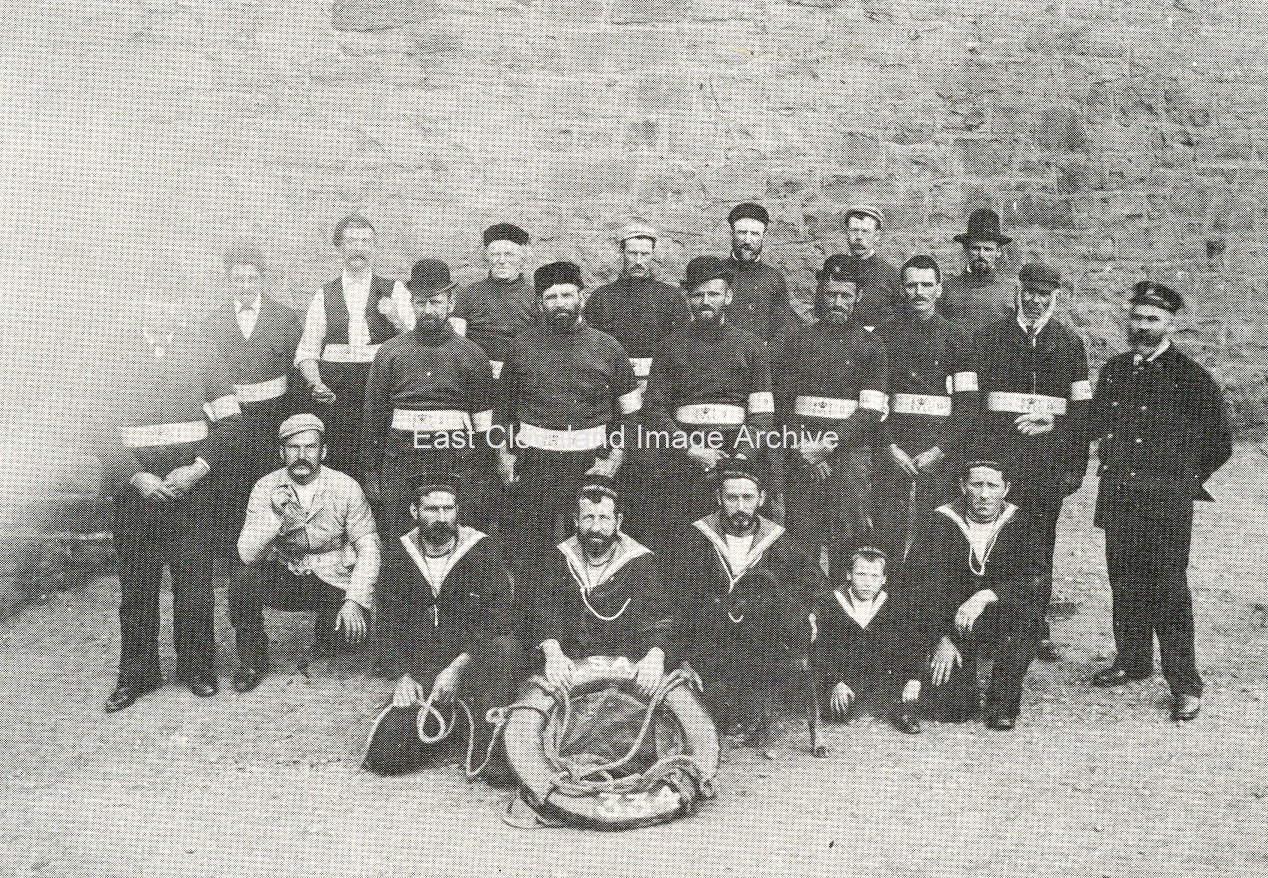
The members of Staithes rescue company grouped down by the beck or harbour in Staithes. L.S.A.’s were formed in several parts of the country and they would be the forerunners of the Coastguard Auxiliary Service. We have not many names for the members, but Ray Con could tell us Jack Bennison is 3rd from the left on the back row. Can anybody assist with any other names?
Image courtesy of Mr. Ray Conn.
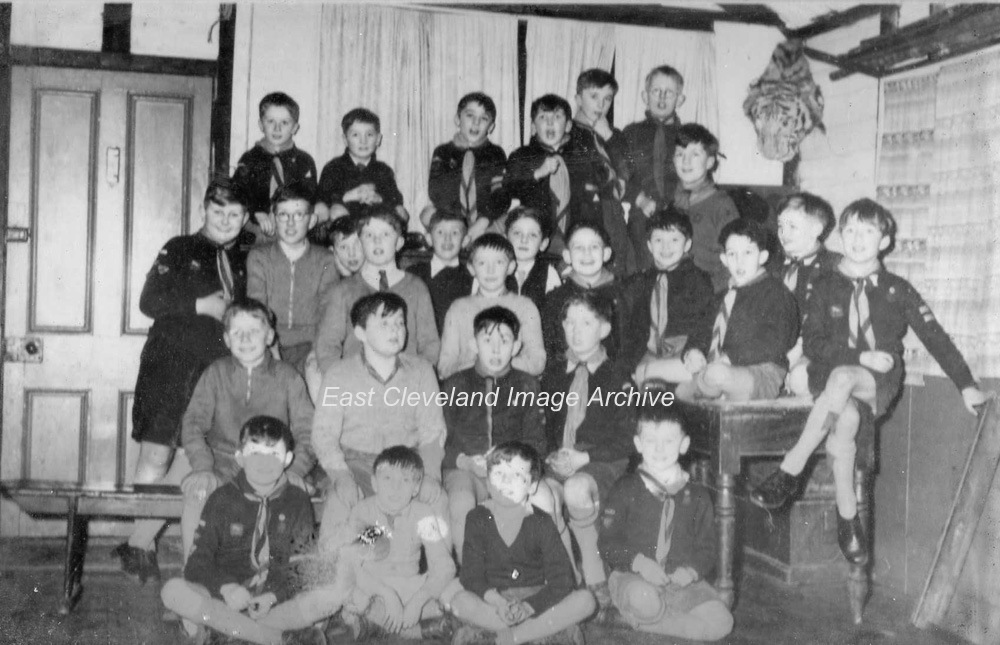
Originally posted this image was listed as Loftus Scouts, but we now know they were Wolf Cubs! This following a comment by Malcolm Covell: “Firstly they aren’t Scouts they are Cubs. I’m 1st left on back row and I was only about 8 or 9 at the time, next to me is Brian Lightfoot ( 2 years younger). Next to him is my brother Dennis Covell (as Sixer = two stripes), he would be about 10; he was born 1947, so it puts the photograph at 1957/58. I can vaguely remember this photo being taken I think there was some sort of big Jamboree that year. Michael Jones is in front of me to the left.”
Back row: Malcolm Covell, Brian Lightfoot, Dennis Covell, ?? , ?? , ?? , ?? .
Third row: Michael Jones, ?? , ?? , ?? , ?? , ?? , ?? , ?? , ?? , ?? , ?? , ?? .
Second row: ?? , ?? , ?? , ?? .
Front row: ?? , ?? , ?? , ?? .
Image courtesy of Stephen Steyert and thanks to Malcolm Covell for that update, can anybody help put a name to the faces?
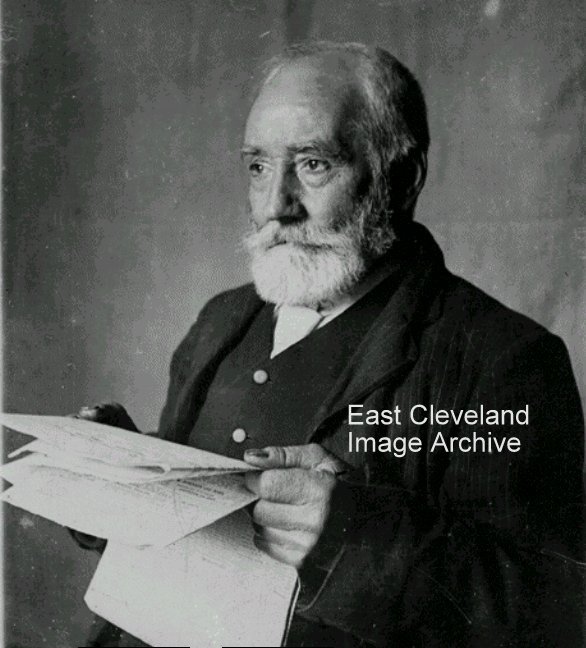
A beautiful portrait of Dyson Nutt in his later years. This Loftus worthy was born in 1844 and was a familiar figure around Loftus as he fulfilled his various duties to the Council. During his life in Loftus he lived in several different houses in Loftus, including Westfield Terrace and the Georgian pillard house in the Market Place. He lies in Loy Lane Cemetery, whose burials he oversaw for most of his working life.

Another photograph from the jubilee brochure of Carlin How Working Men’s Club, this time taken on the bowling green. We asked: “We are sure you will be able to tell us the names of some of the men there?” Derick Pearson told us: “First left is Norman Robinson, Dennis Preston, Jack Verrill; kneeling Mr Carveth and Jack Dredge., Standing Jim Nicholson. Group on right: first left standing is Bill Harrison (nicknamed Mellon or Lemon); far right Mr Husband. Mrs Bob Butterworth and ? Blenkey sat on seat.”
Thanks to Derick Pearson for names update.

Another photograph taken in the jubilee year of Carlin How Club the men are all named,as the Committee and officials. Back row: J. T. Harrison, T. G. Webster, J. Verrill (Sports Secretary), G. R. Burns, William H. Harrison (Vice President), J. Black, J. Dredge, J. Preston, G. Limon.
Front row: N. W. Robinson, J. Husband, J. W. Carveth (Secretary), G. T. Smith (President), L. Smith (Treasurer), J. Nicholson, E. Scott.
Colin Verrill tells us: ”it was taken on the tennis court next to the tennis pavillion, there were two red shale courts and four grass courts”.
Thanks to Colin Verrill for the update.
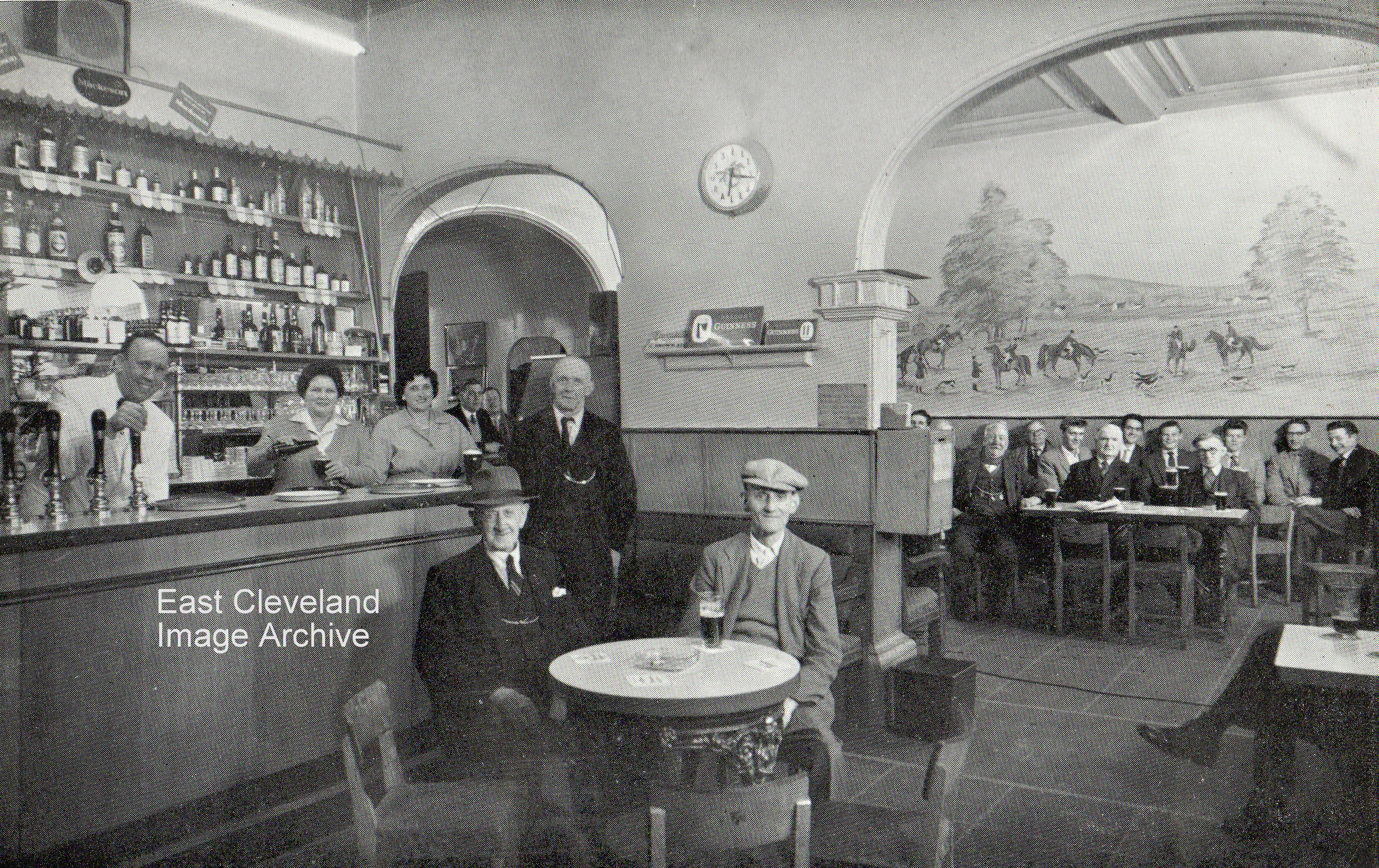
Carlin how Working Men’s Club; yes once it was a man’s domain but not any more, women are now on the committee. When this photograph was taken in the Jubilee year of the club, it was men only in the bar and billiard room; some of the men here are: seated in front: Mr Husband and Mr Winspear. Standing behind them is Bob Butterworth (Club Steward) and stewardess are Charlie and Mary Partridge. The lady at the far end of the bar is Mrs Webster and standing next to her is Mr Webster, some of those seated to the rear are, Ted Simpson, Dick Tyreman, Tom Ward, Derick Smith, Brian Yeoman, Barry Lancaster, Brian Ferguson. Karen Bates tells us: “The Steward and Stewardess were my Nana and Grandad – Charlie and Mary Partridge. They moved on to pubs in the Darlington area after this. The Partridge family are shown living at 11 Bells Huts in 1901 and 1911. Previous to this the family lived at Wood Cottages. There were a number of children in this family and my grandmother was Elsie Prosser Partridge.”
If you know any more of the men please let us know.
Many thanks to Karen Bates and Barry Lancaster for the updates.
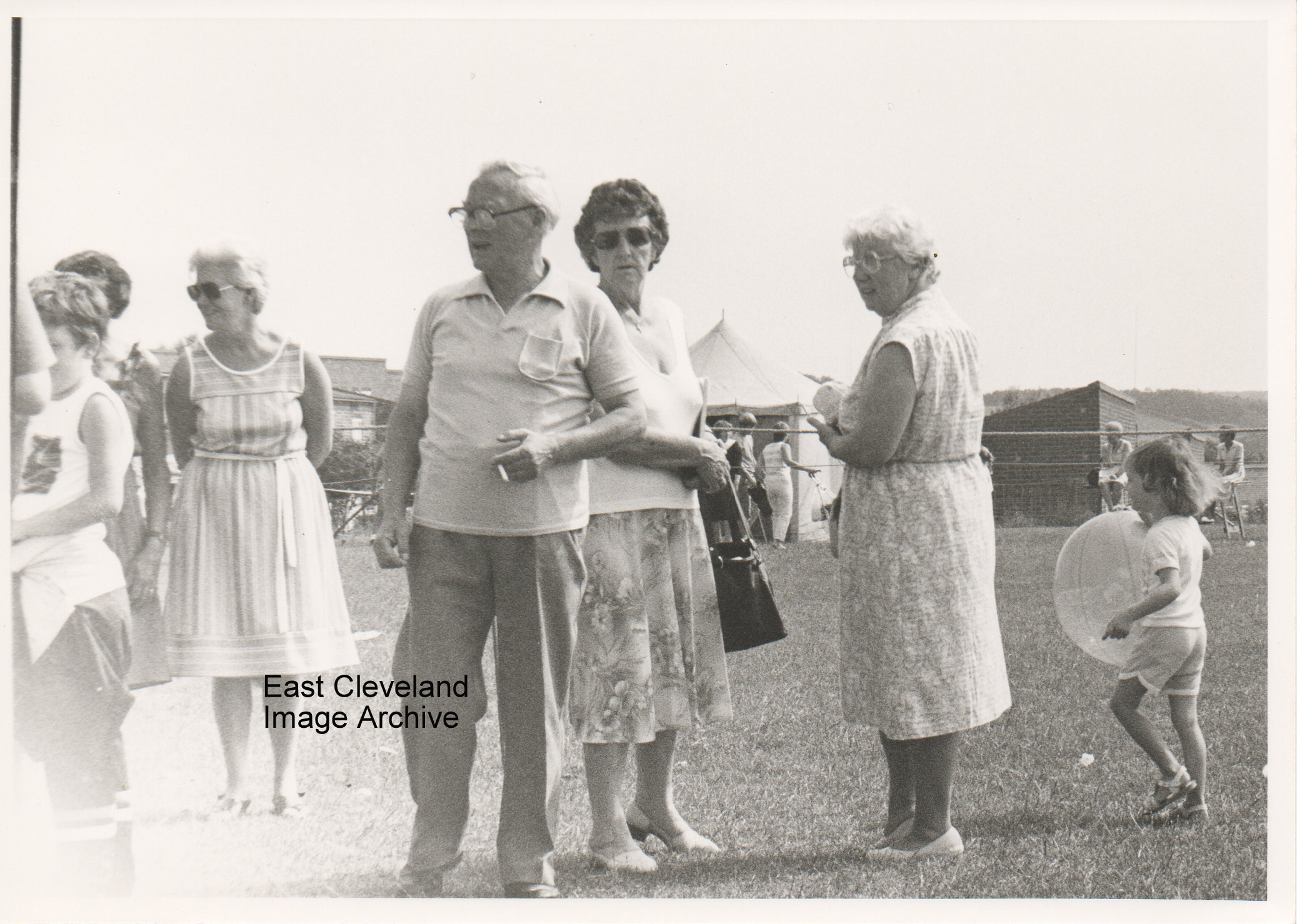
The photograph looks to have been taken from Ben Scotts field with a view of Westfield Estate in the background. The revival of Loftus Wool Fair – in 1989 – part of developments by Loftus Civic Trust to improve community spirit. The girl with balloon, Emma Whitney, next Elsie Pass, then Miffy Wood and wife, then Eileen Found. The year was 1989, held at the football field, Betty Garbutt-Johns, was “Chairman” of the Wool Fair committee.
Image courtesy of Eric Johnson, thanks to Stephen Steyert and Eric Johnson for the updates.
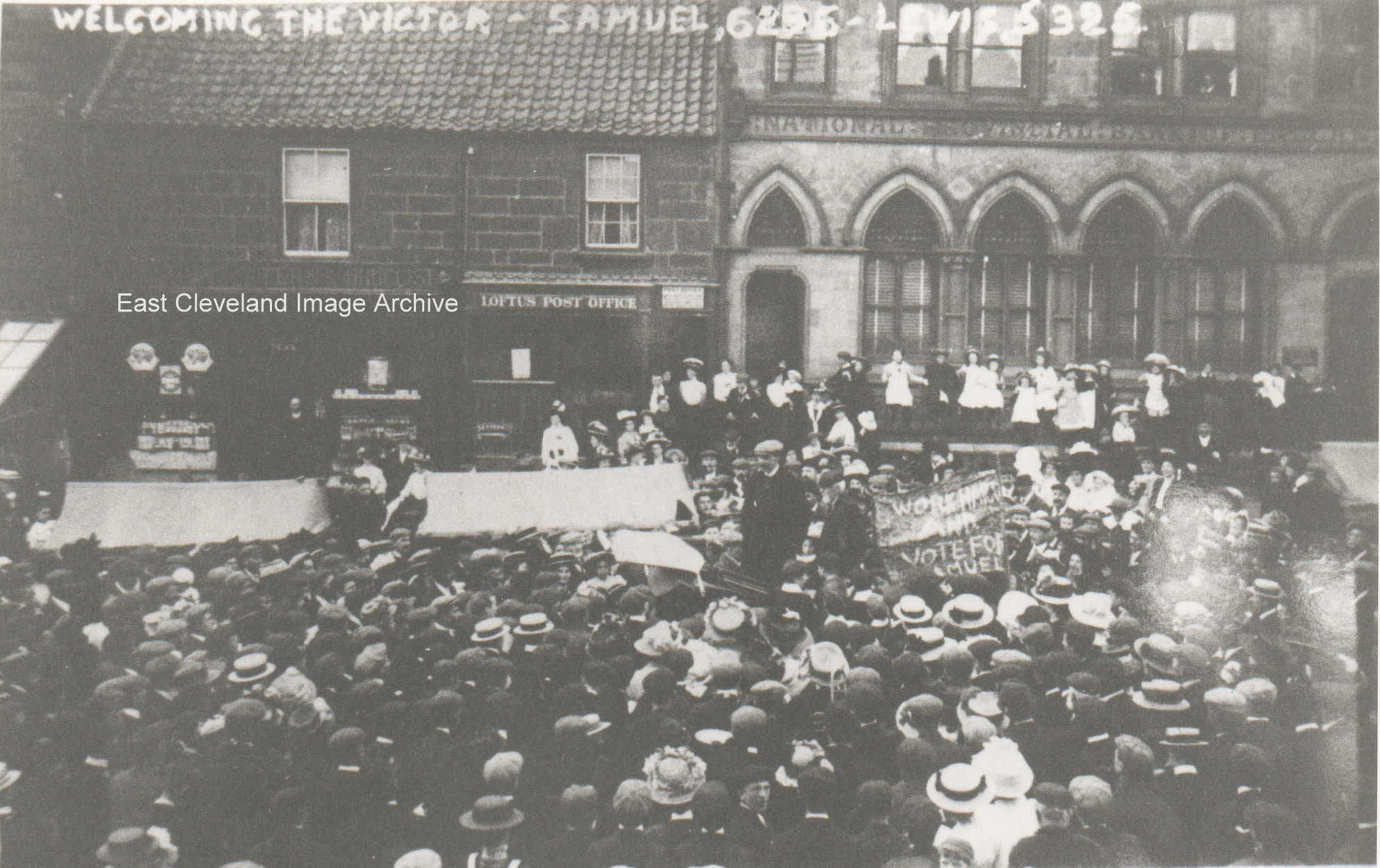
A triumphant return to Loftus for Mr Samuel the winner of the by-election, the post office is easily picked out, with the chemist next door. Interestingly with an electorate of 12,360 Mr Samuel won the seat casting 5,834 votes with his opponent Geoffrey Drage casting 3,798, giving a turn-out of some 70+%; how different to today?
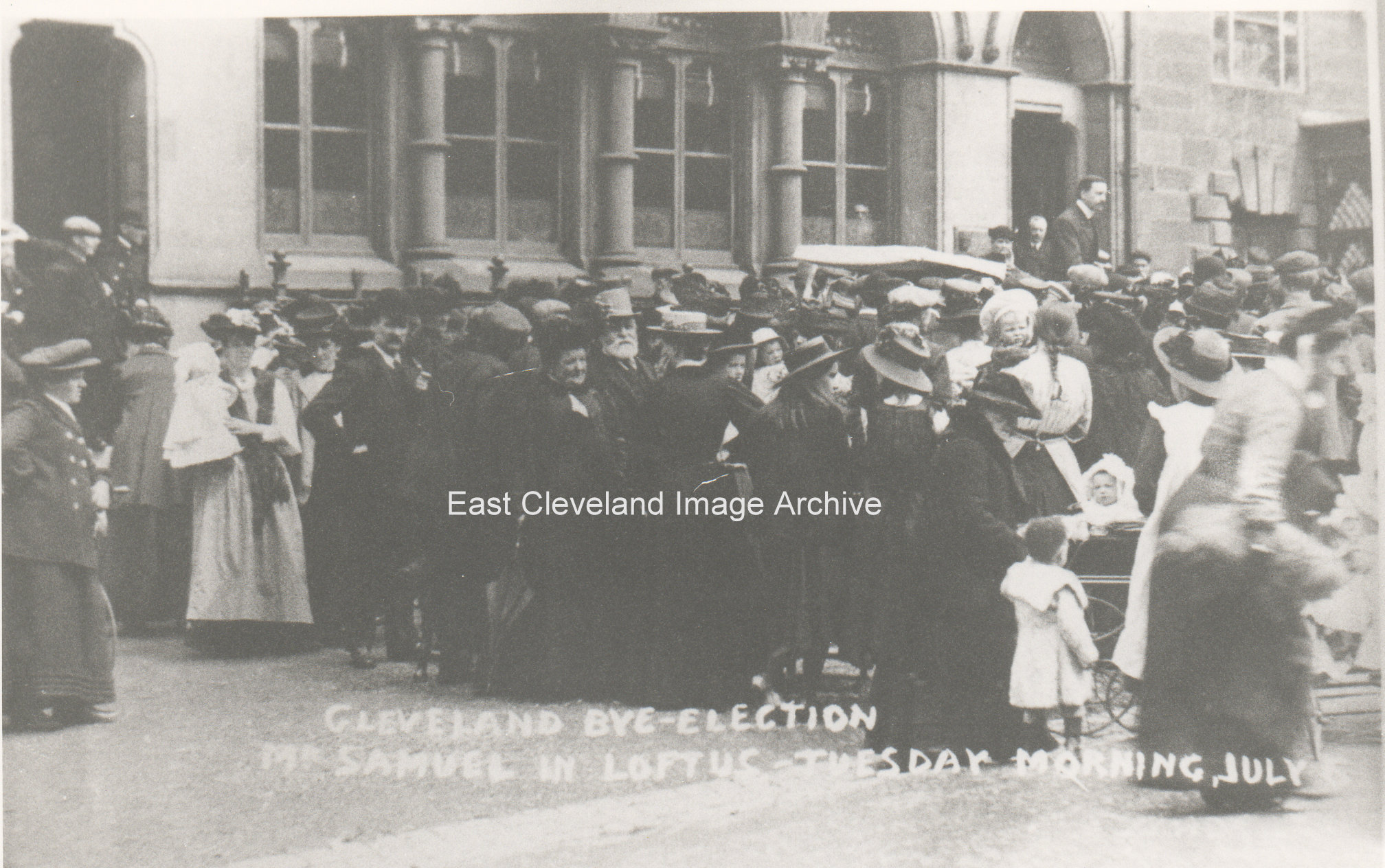
The caption on the photograph says it all, Cleveland by-election Mr Samuel in Loftus Tuesday July 6th, 1902. Outside what used to be the National Provincial Bank later the Nation Westminster Bank (NatWest). The by-election followed the resignation of the standing Liberal MP, Alfred Edward Pease on the grounds of ill-health. Pease had previously been the MP for York from 1885 until 1892; Despite this plea of poor health, Pease actually lived for another 37 years and spent much of the rest of his life in British East Africa (known as Kenya from 1920), hunting game and entertaining travellers who came for the safaris.
|
|










Recent Comments